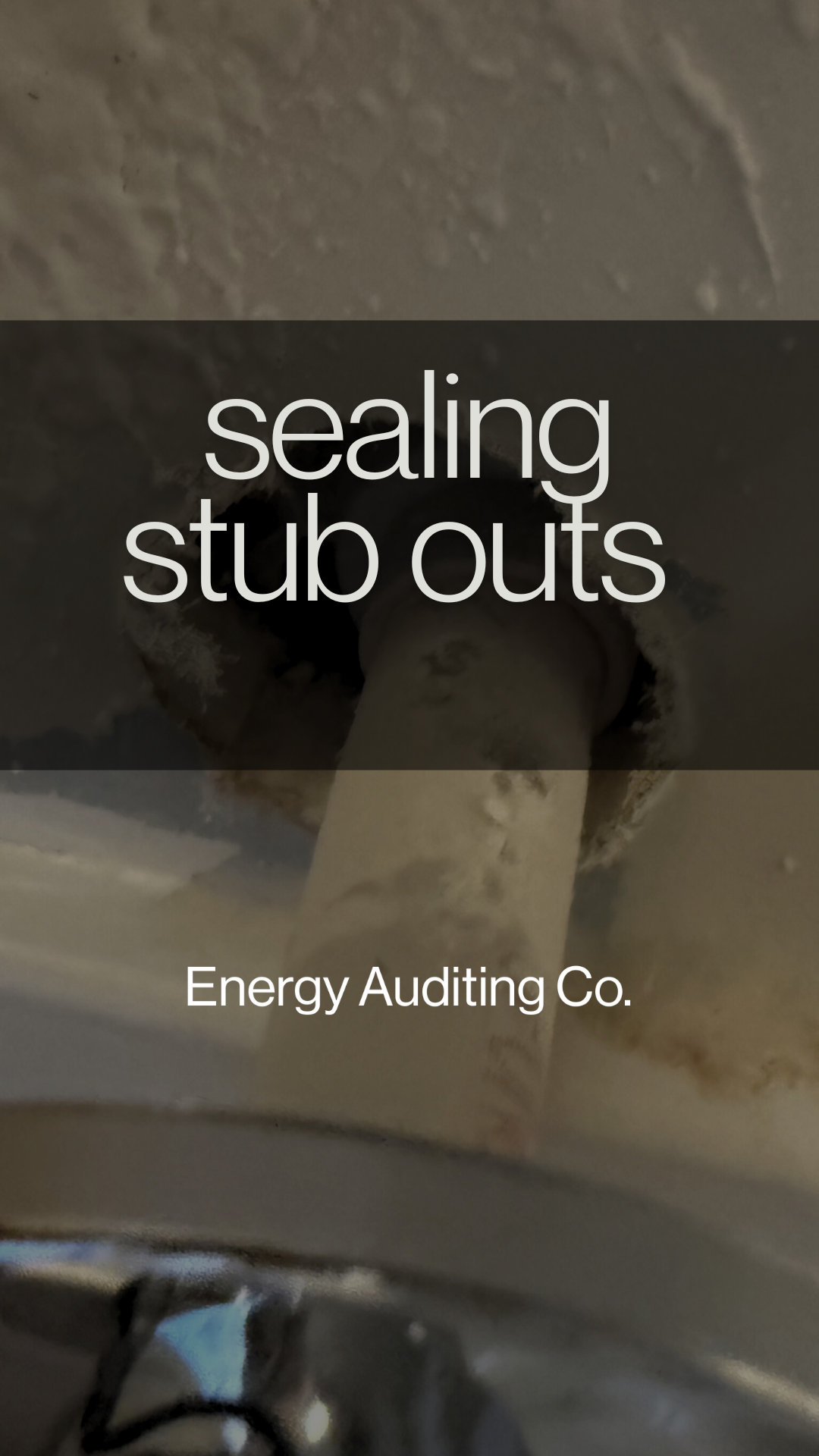Why Sealing Around Plumbing Stub-Outs Is Critical
When it comes to passing the building thermal envelope test in Clark County, small details can make a big difference. One commonly overlooked issue is air leakage around plumbing stub-outs—especially where pipes come through drywall. These gaps may seem minor, but they can significantly impact a building’s energy performance and cause delays in final inspections.
As third-party energy inspectors working throughout Clark County, we often encounter this problem during thermal envelope testing. In one recent example, we found a large gap in the drywall behind the escutcheon plate for a toilet water supply line. The gap allowed unconditioned air to pass freely through the wall cavity, threatening the integrity of the thermal envelope. To correct the issue, we sealed the opening using approved air sealing methods, eliminating the path for air leakage.
Any penetration in the building envelope—whether for plumbing, electrical, or HVAC—must be properly sealed to prevent air from moving in and out of the structure.
Why These Gaps Matter
Any penetration in the building envelope—whether for plumbing, electrical, or HVAC—must be properly sealed to prevent air from moving in and out of the structure. This is especially important on exterior walls. Unsealed openings can allow outside air to enter the home, leading to higher energy bills, uncomfortable drafts, and moisture issues that can affect building durability.
But it’s not just exterior walls that matter. Interior wall penetrations can also create unintended air pathways. For example, air from the attic can travel down wall cavities and escape through plumbing cutouts near the floor. When these areas are left unsealed, the result is the same: air leakage that compromises the performance of the building envelope.
Code Compliance and Final Inspections
In Clark County, passing your thermal envelope test is a required step before final inspection and occupancy approval. Building codes are increasingly focused on energy efficiency, and air sealing plays a major role in meeting those standards. Thermal envelope testing—often referred to as blower door testing—is designed to measure air tightness in a structure. Any significant leaks around plumbing penetrations can cause the building to fail the test.
For general contractors, that means rework, delays, and additional costs. Proper sealing during the rough-in stage is the best way to avoid these issues. Plumbing stub-outs, electrical boxes, recessed lighting, and attic hatches should all be checked and sealed before drywall is installed.
Best Practices for Air Sealing Around Plumbing
Here are a few practical tips to ensure your building passes the thermal envelope test:
Use caulk or low-expansion spray foam to seal gaps around plumbing pipes where they pass through framing or drywall.
Install escutcheon plates with a tight fit, and seal behind them if gaps are present.
Focus on exterior walls, but don't ignore interior walls that have attic or crawlspace connections.
Inspect before insulation is installed, as it's harder to fix air leaks later in the process.
Partner with a Certified Third-Party Energy Inspector
Having a knowledgeable third-party energy inspector on your team can help ensure your project meets all testing requirements. At our inspection firm, we work with general contractors across Clark County to identify problem areas early, offer practical solutions, and help your buildings pass their thermal envelope tests the first time.
Whether you're building a custom home or managing a multifamily development, attention to detail with air sealing will save you time and money in the long run.
Need an inspection or have questions about your next project? Contact us to schedule a consultation or blower door test in Clark County today.
